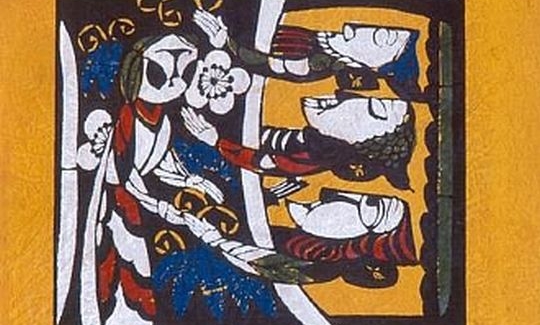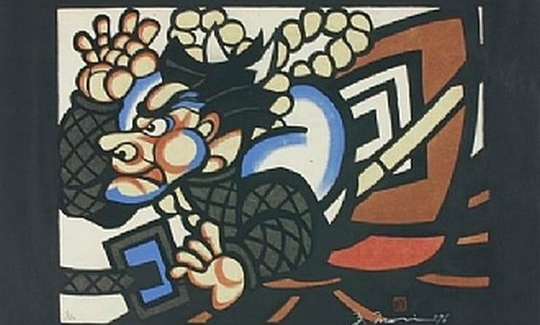When the gates of Japan were opened to the Western world at the time of the Meiji Restoration in 1868, a new era of modernization and industrialization began, bringing with it many political, economic, and cultural changes. With the establishment of trade and cultural exchange with the West, Japanese artists went to study in Europe, with the emphasis on learning the techniques of oil painting. When they returned to Japan, they initially turned away from the traditional ink drawings, and their oil paintings were derivatives of European art. However, they soon realized that the Post-Impressionists were immensely influenced by the Japanese print, and they recognized the value of their own tradition.
At the beginning of the 20th century, a small group of Japanese artists started a new movement, realizing that the Western influence endangered their traditional culture. They wanted to preserve the Japanese attributes of their work, for which the techniques of the thick oil paint were unsuited. So they returned to the woodblock print with its long and revered history in Japan, and to stencil printing derived from the decoration of fabrics for the kimono.
The exhibition comprises modern Japanese woodblock and stencil prints of the Sosaku Hanga. The name "Sosaku Hanga" ("Creative Prints") was chosen by the artists themselves, to differentiate between their own work and the traditional Japanese woodblock prints, the Ukiyo-e ("Pictures from the Floating World") which were so popular in Japan from the mid-17th century to the mid-19th century. The traditional print was prepared by three artists: the artist who made the original sketch, the woodblock carver who prepared the block, and the printer. The print was then transferred to the publisher, who had much influence over the selection of the subject. Traditional prints usually depicted landscapes, scenes from nature, and beautiful women or Kabuki actors. In contrast, the modern artists express their personal view and, like their colleagues in the West, see aspects of artistic expression in the preparation of the print. For this reason, they themselves undertake every stage of the process. Unlike the prints of the Floating World, these individual and original works are not merely illustrations or displays of famous views.
The exhibition presents some 30 works of the second, third, and fourth generations of the Sosaku Hanga artists. Some of them studied with the renowned artists Onchi Koshiro, Hiratsuka Unichi, and others. Their works are virtually free of that neutralism which characterized those of their masters, and their mode is more abstract. Among the prints that have received acclaim both internationally and in Japan, are those of Azechi Umetaro, Watanabe Sadao, Mori Yoshitoshi, Sekino Junichiro, Saito Kiyoshi and Akiyama Iwao. Even though the style of these works resembles that of the West, they nevertheless embody the Japanese attitude, and their face is the face of their time - the time in which Japan has changed irrevocably to become one of the foremost industrial and economic powers in the world today.


